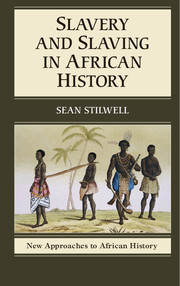Preface
Published online by Cambridge University Press: 05 June 2014
Summary
Slavery and Slaving in African History is a synthetic and interpretive history of slavery in Africa from its earliest manifestations through to the early twentieth century, when slavery in most parts of the continent had ceased to exist. It reconstructs the processes that led to the consolidation of slavery with the broader goal of understanding – as best we can – the lived experience of slaves. Throughout the book, I integrate an analysis of the personal and relational aspect of slavery (between master and slave) into a broader examination of slavery as an institution. I focus especially on the way slavery emerged and changed over time. Mythologies about Africa have often made the study of slavery difficult. In popular imagination, the African past before the twentieth century is often portrayed as fundamentally rural, isolated, unspoiled, simple, and egalitarian. Slavery was rare, while slaves were not exploited as slaves but rather became part of African families. In other cases, Africa is portrayed as little more than the home to unknowable, savage “tribes” gleefully waging war only to sacrifice or sell their victims. An important purpose of Slavery and Slaving in African History is to present Africa, Africans, and slavery in a more realistic and accurate way. Africa was historically diverse; indeed, Africans would not have thought of themselves as “African” until quite recently. Before the twentieth century, the most important local allegiances were to kinship groups, religious orders, occupational groups, villages, cities, or states (among many other possibilities). Africans created cities, armies, polities, and religions over the course of centuries. Although African economies are commonly portrayed as subsistence orientated or fundamentally concerned with the redistribution of goods and resources, over time parts of the continent were increasingly orientated toward production and market exchange. People in some regions used currencies in the form of cowrie shells, for example, while groups of merchants sought actively to profit via the exchange of goods.
- Type
- Chapter
- Information
- Slavery and Slaving in African History , pp. ix - xviPublisher: Cambridge University PressPrint publication year: 2014

